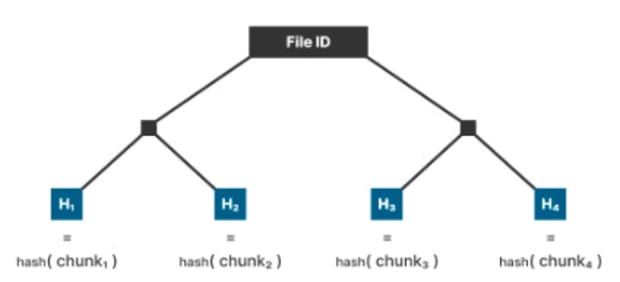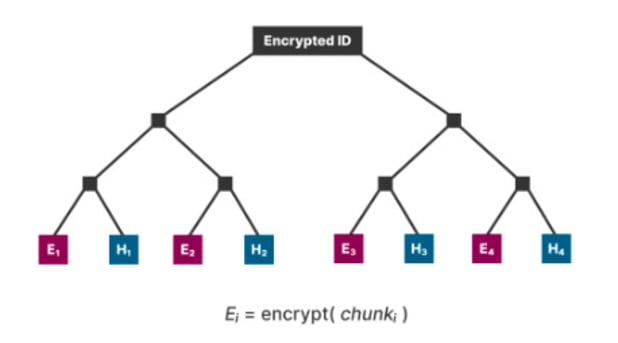The below is an excerpt from a recent edition of Bitcoin Magazine Pro, Bitcoin Magazine’s premium markets newsletter. To be among the first to receive these insights and other on-chain bitcoin market analysis straight to your inbox, subscribe now.
Robert Linus, ZeroSync developer and creator of the BitVM protocol, has created a new protocol for incorporating data sales and downloads into the trustless security of Bitcoin’s blockchain, and it may open a new realm of uses for Bitcoin.
Linus has had a busy career as of late revolutionizing Bitcoin’s potential. Although much of the buzz about Bitcoin in the mainstream is related to its monetization and use as a financial instrument as it increasingly becomes entangled with the existing world of finance, Linus has undertaken several important projects to maximally harness the blockchain in surprising new areas. In addition to his work at ZeroSync to create zero-knowledge proofs, in October, Linus made headlines with his new BitVM protocol: A method to create logic gates and complex computations entirely within Bitcoin’s blockchain. Such functionality, at scale, would enable Bitcoin to carry out smart contracts to the same degree as other tokens like Ethereum, only without sacrificing any of Bitcoin’s decentralized characteristics.
On November 11, Linus announced the proof-of-concept for a new protocol: BitStream. Essentially, the plan is to utilize Bitcoin’s blockchain to make atomic purchases of various data packages; in other words, purchases that require no intermediary and can be accepted or disputed by the buyer and seller purely using the functions of their contract. Linus’ whitepaper goes into greater detail: He specifically draws attention to Nostr, a decentralized protocol designed to create censorship-resistant communications.
Although its trustless nature and general aims are very adjacent to Bitcoin’s ethos, Nostr does not directly use Bitcoin, and Linus claims that “paid servers for platforms like Nostr often underestimate their operating costs when charging a monthly payment for storing a user’s data. Users can split their payment into daily or weekly increments if they don’t trust the servers, but this strategy doesn’t resolve the economic challenges servers face. Users are paying to upload their data, so servers are not paid per download.” He went on to state that one of the main focuses behind BitStream is the requirement that servers are incentivized and compensated, using a pay-for-download basis.

Although Linus was quick to state some of the very easy ways that BitStream’s encryption protocol would be further complicated, to make the service overall more secure, he made an explanation of the basic fundamentals using a much more simplified model. Essentially, as is extremely common in file encryption, the initial file is broken into chunks to form a Merkle tree, and it then hashes each chunk of data. The new File ID is the root of this tree, the piece of information that contains all the hashes and none of the original data. A one-time pad is then used to encrypt each of the original chunks, using a different formula than the hashes in the unencrypted tree. The hashed chunks and the new encryptions of the same chunks are then paired together, into a new tree with a new root that is shared with the server.

With the Encrypted ID available, an automated process can exist where payment by the seller is automatically met with the other pieces of data needed to decrypt the actual file: All encrypted chunks, the hashes of all unencrypted chunks and the original file ID. If there is any discrepancy between the encrypted chunks and the unencrypted chunks, it will be immediately evident, and the buyer can use it as a proof to the blockchain that the transaction is somehow bogus and should be refunded. In this way, a secure method for transferring files is transformed into a trustless contract that financially incentivizes the data server, all using the power of Bitcoin’s blockchain.

This protocol is enabled with a wide variety of Bitcoin’s payment channels, obviously including the Lightning Network but also sidechains like Liquid and several more obscure solutions. It is also constructed in a similar way to BitVM, not necessarily clogging up Bitcoin’s blockchain by making every step require on-chain transactions, but verification and disputes can easily do this to carry out disputes. When Linus was told that BitStream does for storage space what BitVM does for execution time, and asked if they could be combined, he replied in the affirmative and claimed that he came up with BitStream first, and needed to figure out how to generalize it into BitVM.
Although this protocol has had both its supporters and detractors, Linus was succinct when he was asked on Twitter what makes this protocol better than other storage solutions? His answer: “It’s bitcoin.” Once again, Linus has figured out a way to carry out some of the functions some altcoins have centered their business model around, all using the number one decentralized currency, and not even having negative side effects. It’s in this spirit, then, that we should consider Durabit: a similar protocol for using Bitcoin to incentivize and guarantee the security of data transfers, albeit with an anonymous creator.
Durabit is a protocol built on top of one of the Internet’s most notorious protocols, BitTorrent, the file hosting service. Although it has gained an immense reputation over its 22 years of functionality, it requires users to actively seed the data for further downloads. If a file is downloaded by users more often than it is re-seeded, it disappears. Durabit does not propose a completely trustless method to solve this, although it is reasonably low-trust: A mint runs the protocol, and accepts funds from users that wish to see a file seeded. The mint then makes micro-payouts to seeders at timed intervals, so that the mint cannot directly abscond with the funds and the initial investor can revoke the remaining funds if they feel the mint is acting in a dishonest manner.
This protocol is far more niche, and for that matter less trustless than BitStream, but it nevertheless opens up a truly novel use-case in the history of Bitcoin. Although the cry of “seed your torrents!” has been an essential refrain for good Internet etiquette for decades now, the disappearance of files from the platform and the difficulties of running a program like Nostr show that goodwill isn’t always enough. With Bitcoin, there can be an actual incentive to continue best practices and encourage the free flow of information, all without tying these incentives to an outside authority.
Even the most well-intentioned overseer can still be pressured by external forces to stop the flow of data, but protocols like these show how information can flow with either a tiny arbitrator or none at all. Bitcoin has a powerful ability to transform the entire world of data markets, and it’s all contained within the most fundamental laws of Bitcoin’s ethos. If BitStream sees widespread use, if further anonymous Bitcoiners create protocols like Durabit, who knows what the possibilities are? After the community begins to innovate on a new concept for Bitcoin, the sky’s the limit.
Credit: Source link






















 Bitcoin
Bitcoin  Ethereum
Ethereum  Tether
Tether  Solana
Solana  USDC
USDC  XRP
XRP  Lido Staked Ether
Lido Staked Ether  Dogecoin
Dogecoin  Toncoin
Toncoin  Cardano
Cardano  Shiba Inu
Shiba Inu  Avalanche
Avalanche  TRON
TRON  Polkadot
Polkadot  Wrapped Bitcoin
Wrapped Bitcoin  Bitcoin Cash
Bitcoin Cash  Chainlink
Chainlink  Polygon
Polygon  NEAR Protocol
NEAR Protocol  Internet Computer
Internet Computer  Litecoin
Litecoin  LEO Token
LEO Token  Uniswap
Uniswap  Dai
Dai  First Digital USD
First Digital USD  Aptos
Aptos  Ethereum Classic
Ethereum Classic  Hedera
Hedera  Cosmos Hub
Cosmos Hub  Cronos
Cronos  Mantle
Mantle  Pepe
Pepe  Stellar
Stellar  Filecoin
Filecoin  Immutable
Immutable  Stacks
Stacks  Render
Render  XT.com
XT.com  OKB
OKB  Renzo Restaked ETH
Renzo Restaked ETH  Optimism
Optimism  dogwifhat
dogwifhat  Arbitrum
Arbitrum  Bittensor
Bittensor  Sui
Sui  Wrapped eETH
Wrapped eETH  Maker
Maker 
